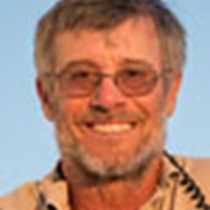Hornsund, Spitsbergen Island
Hornsund is a major fjord jutting into the southwest coastline of Spitsbergen, the largest island in the Svalbard archipelago. Jonas Poole, an English whaler, named the inlet in 1610: “…they brought a piece of a Deeres horne aboard, therefore I called this sound Horne Sound.” Today’s explorations took place in Hornsund and its tributaries, within a few miles of seventy-seven degrees north latitude (our farthest north, reached earlier in the voyage, was just north of eighty degrees, about seven hundred twenty statute miles from the north pole).
Endeavour left her scenic parking spot in the sea ice in front of Samarinbreen this morning and took a leisurely cruise before dropping anchor near point Wilczekodden, the location of a Polish research station. Before going ashore, we heard Shaun’s presentation about the land mammals of Svalbard – the arctic fox and the Svalbard reindeer.
Gathering at the landing site, we watched a gaggle of 66 Barnacle geese purposefully walk across the tundra, swim through a small pond, cross another patch of open ground and enter the fjord. These geese are going through their annual molt and will be flightless for another week or so until their primary flight feathers grow in.
Taking a variety of routes, most of us made our way over the tundra to a massive Dovekie (Little auk) colony. These small relatives of puffins nest in scree slopes, and their colonies are easily spotted, as their guano fertilizes the soil below enabling luxuriant plant growth. Clouds of these seabirds flew overhead as predacious glaucous gulls patrolled the air space above. Others sat quietly as we watched and photographed.
Still on the way to the research station, three reindeer with large racks covered with velvet, lay chewing their cud. While we were excited by the sighting, the reindeer seemed unimpressed with us, barely looking in our direction. After a warm welcome at the station, it was back to the ship for a Swedish smorgasbord to fuel us for the afternoon.
No wind and calm seas made kayak and Zodiac explorations look inviting, but as we were preparing to lower the boats a polar bear appeared across Burgerbutka and we were off. Captain Skog maneuvered Endeavour through the ice as the bear continued its walk providing fine looks. Numerous ringed seals sat hauled out on the ice. Continuing our search, we spotted a pod of Beluga whales and, finally, a swimming polar bear.
Evening found us gathered in the lounge for the Farewell Reception, sharing our favorite parts of our expedition to the high arctic.
Hornsund is a major fjord jutting into the southwest coastline of Spitsbergen, the largest island in the Svalbard archipelago. Jonas Poole, an English whaler, named the inlet in 1610: “…they brought a piece of a Deeres horne aboard, therefore I called this sound Horne Sound.” Today’s explorations took place in Hornsund and its tributaries, within a few miles of seventy-seven degrees north latitude (our farthest north, reached earlier in the voyage, was just north of eighty degrees, about seven hundred twenty statute miles from the north pole).
Endeavour left her scenic parking spot in the sea ice in front of Samarinbreen this morning and took a leisurely cruise before dropping anchor near point Wilczekodden, the location of a Polish research station. Before going ashore, we heard Shaun’s presentation about the land mammals of Svalbard – the arctic fox and the Svalbard reindeer.
Gathering at the landing site, we watched a gaggle of 66 Barnacle geese purposefully walk across the tundra, swim through a small pond, cross another patch of open ground and enter the fjord. These geese are going through their annual molt and will be flightless for another week or so until their primary flight feathers grow in.
Taking a variety of routes, most of us made our way over the tundra to a massive Dovekie (Little auk) colony. These small relatives of puffins nest in scree slopes, and their colonies are easily spotted, as their guano fertilizes the soil below enabling luxuriant plant growth. Clouds of these seabirds flew overhead as predacious glaucous gulls patrolled the air space above. Others sat quietly as we watched and photographed.
Still on the way to the research station, three reindeer with large racks covered with velvet, lay chewing their cud. While we were excited by the sighting, the reindeer seemed unimpressed with us, barely looking in our direction. After a warm welcome at the station, it was back to the ship for a Swedish smorgasbord to fuel us for the afternoon.
No wind and calm seas made kayak and Zodiac explorations look inviting, but as we were preparing to lower the boats a polar bear appeared across Burgerbutka and we were off. Captain Skog maneuvered Endeavour through the ice as the bear continued its walk providing fine looks. Numerous ringed seals sat hauled out on the ice. Continuing our search, we spotted a pod of Beluga whales and, finally, a swimming polar bear.
Evening found us gathered in the lounge for the Farewell Reception, sharing our favorite parts of our expedition to the high arctic.




